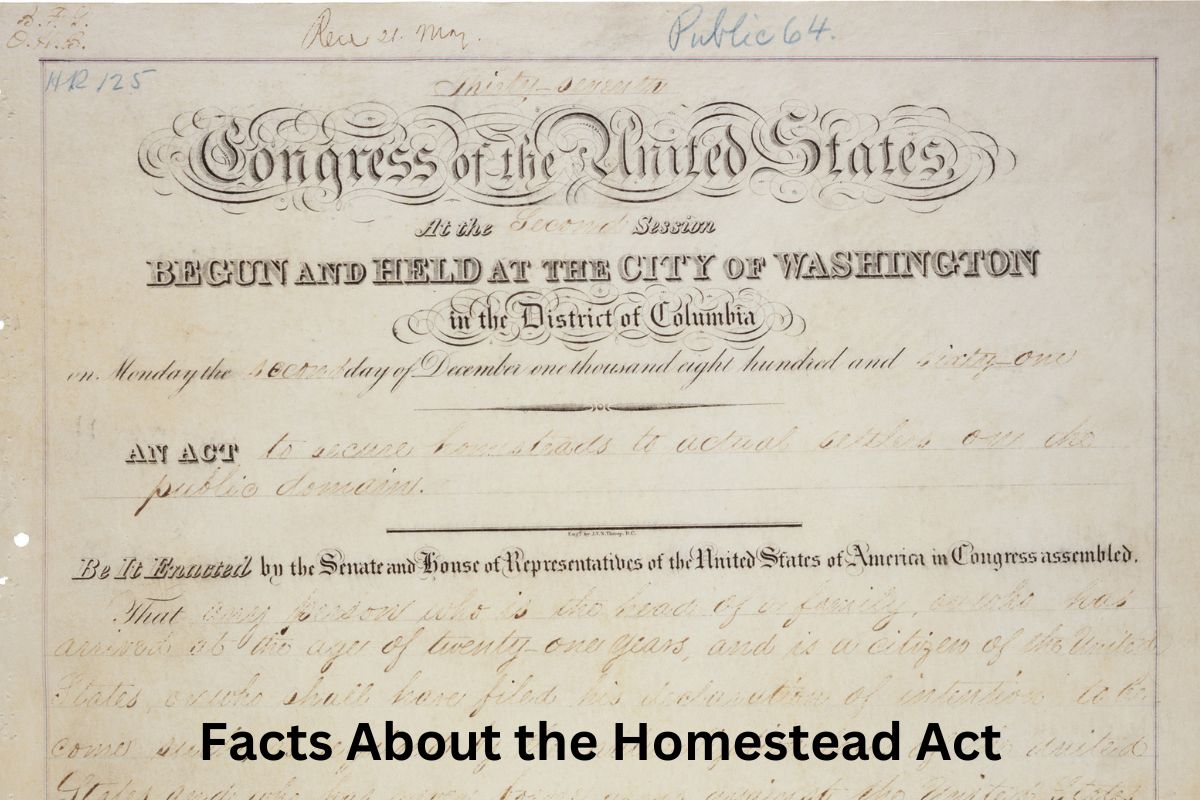The Homestead Act allowed thousands of people to acquire land in the western part of the Uited States of America.
In 1862, President Abraham Lincoln of the United States of America passed a federal law called the Homestead Act, which made land in the western part of the country available for free.
Any person who was a citizen or had filed a declaration of intention to become a citizen, and who was at least 21 years old, head of household, or had served in the armed forces for at least 14 days was eligible to vote. Voting was also open to anyone who had served in the armed forces for at least 14 days.
The law had a positive impact on the westward growth and settlement of the country, but it also had a terrible impact on the environment and the indigenous people of the land.
Homestead Act Facts
1. The Homestead Act was signed into law during the Civil War.
During the height of the American Civil War in 1862, President Abraham Lincoln was able to find time to sign the Homestead Act into law.
Lincoln encouraged westward expansion and the settlement of the vast territory that made up the United States, and he signed this act as part of his plan to do so.
2. The Homestead Act provided free land to settlers who met certain requirements.
Under the terms of the Homestead Act, prospective settlers were eligible for free land if they met one of the following criteria: they had to be at least 21 years old, the head of their family, or they had to have served in the military for at least 14 days.
The statute granted settlers the right to claim up to 160 acres of property, on the condition that they resided on the land and made improvements to it for a minimum of five years.
3. The Homestead Act was intended to promote westward expansion and settlement.
It was the goal of the Homestead Act to entice individuals to relocate westward and establish new communities in the vast regions that make up the United States.
The act aided in the development and colonization of western states and territories, such as:
- Montana
- Wyoming
- Colorado
- Dakotas
4. The Homestead Act had a significant impact on the environment and the Indigenous peoples of the western United States.
As a result of the Homestead Act, there was a significant increase in the amount of land that was used for overgrazing and deforestation.
Settlers frequently employed farming practices that were not sustainable, which resulted in the depletion and erosion of soil, and they also hunted game to the point that it was on the verge of extinction.
In addition, European settlers frequently encroached into the land of indigenous North and South Americans, which resulted in violent clashes and the relocation of indigenous peoples.
5. The Homestead Act was one of several land acquisition programs implemented by the U.S. government.
The United States federal government carried out a number of initiatives, including the Homestead Act, in order to purchase land.
The Gadsden Purchase, the Louisiana Purchase, and the Mexican Cession were some of the other initiatives that were carried out.
The expansion of the United States and the fueling of economic growth were both aided along by the acquisition of these territories.
6. The Homestead Act was used by an estimated 1.6 million people to claim land in the western United States.
It is believed that 1.6 million people in the western United States made advantage of the Homestead Act in order to stake their claim to land.
The majority of these pioneers came from Europe in search of a better life in what they perceived to be the land of opportunity, the United States.
7. The Homestead Act was in effect until 1986.
From its passage in 1862 until its repeal in 1986, the Homestead Act was in force for a total of 124 years. In 1976, the act was declared unconstitutional, however certain aspects of the act continued to be in force until 1986.
8. The Homestead Act played a role in shaping American culture and identity.
The Homestead Act was crucial in the development of a culture in the United States that values self-sufficiency and independence.
A potent cultural emblem that has had an enduring influence on American identity is the concept of the “rugged individualist,” or a person who is capable of fending for themselves and living independently in the wilderness.
9. There were other Acts that allowed for much more land to be claimed.
The initial Homestead Act of 1862 permitted settlers to claim up to 160 acres of land, but successive homestead acts raised the amount of land available for particular sorts of land use.
- The Dry Farming Homestead Act of 1908 permitted settlers in specified dryland areas to claim up to 320 acres of land. Because of the arid climate, dryland farming required more land to produce a profitable crop.
- The Stock-Raising Homestead Act of 1916 permitted settlers to claim up to 640 acres of property for ranching reasons. This was due to the fact that ranching requires additional space for grazing and cattle breeding.
However, the rules for settling and maintaining the land remained the same as in the original Homestead Act, with settlers needed to live on and improve the land for a defined amount of time before gaining full ownership.
10. Roughly 10% of the total land of the United States was given away.
The United States government distributed roughly 270 million acres of land free of charge in accordance with the conditions of the Homestead Act between the time it was approved in 1862 and the time it was repealed in 1976.
This accounts for perhaps in the neighborhood of ten percent of the total land area that the United States possesses.
